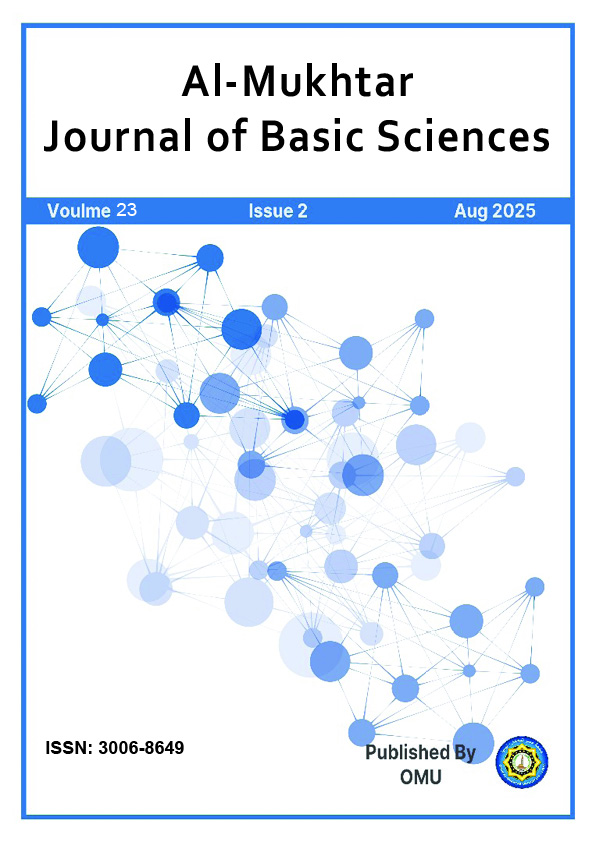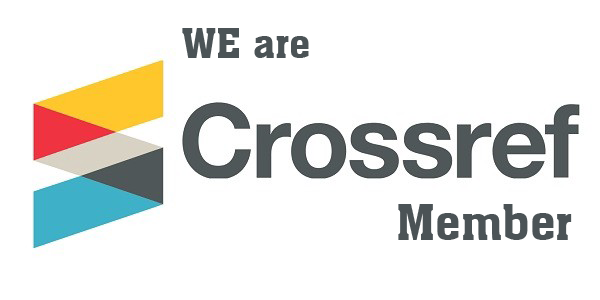Determination of lead Element in Hair Dye Samples Available in Libyan Markets Using Atomic Absorption Spectroscopy
DOI:
https://doi.org/10.54172/h2qgcx97Keywords:
Hair Dyes, Lead, Atomic Absorption Spectroscopy (AAS), Heavy MetalsAbstract
Hair dyes are essential to cosmetic products; however, they may contain harmful chemicals that pose health risks when used repeatedly. This study analyzed six commercial hair dye samples available in the Libyan markets, representing multiple colors (black, blonde and brown) to ensure a comprehensive assessment. Advanced analytical techniques, specifically Atomic Absorption Spectroscopy (AAS), were employed to determine the lead concentration in the samples. Random samples were selected from the markets for analysis, and the results revealed that most samples had undetectable levels of lead (<0.1 µg/L) for samples 1 to 3. However, sample 4 exhibited a significant lead concentration, with an average value of 12.92 µg/L, ranging from 10.2 µg/L to 14.56 µg/L. Samples 5 and 6 were also free from detectable lead. This study emphasizes the importance of continuous monitoring of cosmetic products, particularly regarding heavy metals that could pose public health risks. The findings suggest that some products contain elevated lead levels, highlighting the need for preventive measures to ensure consumer safety. Additionally, the study calls for increased consumer awareness of the risks of lead exposure and the importance of selecting safe products.
References
ASTM International. (2022). ASTM D4975-22: Standard test method for lead in paint by atomic absorption spectroscopy. ASTM International.
Bellinger, D. C. (2017). Lead neurotoxicity and the developing brain: Implications for the preven-tion of neurodevelopmental disorders. Environmental Health Perspectives, 125(4), 451-457.
Bnhmad, M. H. A., Alterhoni, E., benhamad, O., & Amimn, A. M. (2024). Estimate of Sodium Benzoate Preservative in Some Soft Drinks in Local Markets in Libya Using a UV-Spectrometer. Tarbawe Journal. 24, 189-193. http://tarbawej.elmergib.edu.ly.
Chojnacka, K., Górecka, H., Chojnacki A., and Górecki, H. (2005) Inter-element interactions in human hair. Environ Toxicol Pharmacol, vol. 20, no. 2, pp. 368–374.
Cohen, J., Smith, T., & Davis, R. (2022). Application of Atomic Absorption Spectrometry in the analysis of heavy metals in personal care products. Journal of Environmental Analytical Chemistry, 45(2), 134-145.
European Commission. (2019). Regulation (EC) No 1223/2009 on cosmetic products. Official Journal of the European Union.
Hussein, S. A., Al-Kahtani, S. A., & Rahman, M. A. (2020). Heavy metals in cosmetics: Sources, exposure routes, and health effects. Environmental Toxicology and Pharmacology, 74, 103332.
Kaur, M., & Prakash, S. (2015). Environmental contamination by heavy metals in cosmetic prod-ucts. Environmental Toxicology and Pharmacology, 39(3), 1122-1129. [DOI: 10.1016/j.etap.2015.02.006]
Rasool, S. R., Al-Dahhan, W., Al-Zuhairi, A. J., F., Hussein, Rodda, K. E., and Yousif E. (2016) Fire and Explosion Hazards expected in a Laboratory, J Lab Chem Educ, vol. 4, no. PNNL-SA- 118942.
U.S. Food and Drug Administration. (2020). Lead in Cosmetics. Retrieved from FDA.gov
Ugochukwu, M. I., Ogbu, C. A., & Ogbunugafor, H. A. (2021). Assessment of lead and other heavy metals in commercial hair dye products in Nigeria. Environmental Monitoring and Assessment, 193(4), 219.
Vargas, L., Rojas, J., Rodríguez, M., & Sáez, M. (2014). Heavy metal contamination in personal care products. Journal of Environmental Science and Health, Part A, 49(9), 987-993. DOI: 10.1080/10934529.2014.922045.
World Health Organization. (2019). Lead exposure and health. World Health Organization.
Downloads
Published
Issue
Section
License
Copyright (c) 2025 Elham Alterhoni, Mona H. Bnhmad, Rabia Omar Eshkourfu, Amina Mohamed Amimn (Author)

This work is licensed under a Creative Commons Attribution-NonCommercial 4.0 International License.
Copyright of the articles Published by Al-Mukhtar Journal of Basic Sciences (MJBS) is retained by the author(s), who grant MJBS a license to publish the article. Authors also grant any third party the right to use the article freely as long as its integrity is maintained and its original authors and cite MJSc as the original publisher. Also, they accept the article remains published by the MJBS website (except in the occasion of a retraction of the article).












